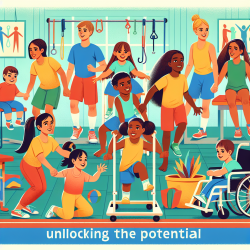Introduction
Adolescence is a critical period marked by rapid emotional and cognitive changes. As children navigate this complex phase, the influence of parental figures, particularly mothers, becomes paramount. Recent research by Keskin and Branje (2022) delves into the intricate dynamics between maternal emotion dysregulation, maternal autonomy support, and adolescent emotion dysregulation. This study offers valuable insights for practitioners aiming to enhance their therapeutic approaches and foster positive outcomes for adolescents.
Understanding the Research
The study examined 466 Dutch adolescents and their mothers over five years, utilizing a Random Intercept-Cross Lagged Panel Model to explore the relationships between maternal and adolescent emotion dysregulation and maternal autonomy support. The findings revealed significant correlations at both the between-family and within-family levels, highlighting the complex interplay of these factors.
Key Findings and Implications
- Maternal Influence: At the between-family level, mothers who exhibited higher emotion dysregulation were linked to adolescents with similar challenges. Conversely, maternal autonomy support was associated with better adolescent emotion regulation.
- Within-Family Dynamics: Surprisingly, within-family analyses showed that higher maternal emotion dysregulation in a given year predicted lower adolescent emotion dysregulation the following year. This suggests a potential compensatory mechanism where adolescents may strive to regulate their emotions better in response to maternal challenges.
- Adolescent Impact: Adolescents' emotion dysregulation was found to influence maternal autonomy support, indicating a bidirectional relationship where adolescent behavior can shape maternal responses over time.
Practical Applications for Practitioners
For practitioners in speech language pathology and related fields, these findings underscore the importance of a holistic approach that considers both maternal and adolescent factors. Here are some strategies to implement these insights:
- Focus on Maternal Support: Encourage mothers to enhance their emotion regulation skills and provide autonomy support, which can positively influence adolescent emotional development.
- Monitor Adolescent Behavior: Pay attention to changes in adolescent emotion regulation as potential indicators of shifts in family dynamics and maternal support.
- Promote Open Communication: Foster environments where adolescents feel comfortable expressing their emotions, thereby enhancing their regulation skills and reducing reliance on maternal emotional cues.
Encouraging Further Research
While this study provides valuable insights, it also opens avenues for further research. Practitioners are encouraged to explore additional factors that may influence these dynamics, such as socioeconomic status, cultural differences, and the role of fathers or other caregivers. By expanding the scope of research, we can develop more comprehensive strategies to support adolescent emotional development.
To read the original research paper, please follow this link: Longitudinal relations between maternal and adolescent emotion dysregulation and maternal autonomy support.










